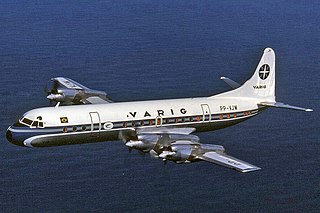
The Lockheed L-188 Electra is an American turboprop airliner built by Lockheed. First flown in 1957, it was the first large turboprop airliner built in the United States. Initial sales were good, but after two fatal crashes that led to expensive modifications to fix a design defect, no more were ordered. With its fairly high power-to-weight ratio, huge propellers and very short wings, large Fowler flaps which significantly increased effective wing area when extended, and four-engined design, the airplane had airfield performance capabilities unmatched by many jet transport aircraft even today—particularly on short runways and high altitude airfields. Jet airliners soon supplanted turboprops for many purposes, and many Electras were modified as freighters. Some Electras are still being used in various roles into the 21st century. The airframe was also used as the basis for the Lockheed P-3 Orion maritime patrol aircraft.
This is a list of aviation-related events from 1974. 1974 had been deemed as “the single worst year in airline history” although this has since been surpassed.

Eastern Air Lines Flight 401 was a scheduled flight from New York JFK to Miami. Shortly before midnight on December 29, 1972, the Lockheed L-1011-1 TriStar crashed into the Florida Everglades, causing 101 total fatalities. All three cockpit crew members, two of the 10 flight attendants, and 96 of the 163 passengers were killed; 75 people survived.

The Lockheed Model 14 Super Electra was an American civil passenger and cargo aircraft built by the Lockheed Aircraft Corporation during the late 1930s. An outgrowth of the earlier Model 10 Electra, the Model 14 was also developed into larger, more capable civil and military versions.
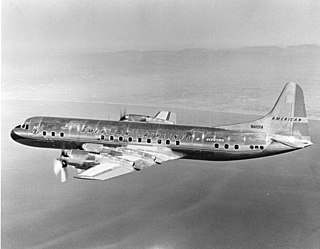
American Airlines Flight 320 was a scheduled flight between Chicago Midway Airport and New York City's LaGuardia Airport. On February 3, 1959, the Lockheed L-188 Electra performing the flight crashed into the East River during its descent and approach to LaGuardia Airport, killing 65 of the 73 people on board. Weather conditions in the area were poor, and the aircraft descended through dense clouds and fog. As it approached the runway, it flew lower than the intended path and crashed into the icy river 4,900 feet (1,500 m) short of the runway. American Airlines had been flying the newly-developed Lockheed Electra in commercial service for only about two weeks before the accident, and the accident was the first involving the aircraft type.

Air France Flight 296Q was a chartered flight of a new Airbus A320-111 operated by Air Charter International for Air France. On 26 June 1988, the plane crashed while making a low pass over Mulhouse–Habsheim Airfield as part of the Habsheim Air Show. Most of the crash sequence, which occurred in front of several thousand spectators, was caught on video.

United Air Lines Flight 553 was a scheduled flight from Washington National Airport to Omaha, Nebraska, via Chicago Midway International Airport. On December 8, 1972, the Boeing 737-222 serving the flight, City of Lincoln, registration N9031U, crashed while approaching Midway Airport.
Northwest Airlines Flight 2 was a Lockheed Super Electra aircraft, registration NC17388, which crashed into the Bridger Mountains in Gallatin County, Montana, about twelve miles (20 km) northeast of Bozeman, on January 10, 1938. All ten on board were killed in the accident, which was the first fatal crash of a Lockheed Super Electra and of a Northwest Airlines aircraft.

Braniff International Airways Flight 352 was a scheduled domestic flight from William P. Hobby Airport in Houston, Texas, United States, to Dallas Love Field in Dallas; on May 3, 1968, a Lockheed L-188A Electra flying on the route, registration N9707C, broke up in midair and crashed near Dawson, Texas, after flying into a severe thunderstorm. It was carrying five crew and 80 passengers; there were no survivors. Among those killed was Texas state representative Joseph Lockridge, the first black man to represent Dallas County in the Texas Legislature. Investigation revealed that the accident was caused by the captain's decision to penetrate an area of heavy weather followed by a structural over-stress and failure of the airframe while attempting recovery from loss of control during a steep 180-degree turn executed in an attempt to escape the weather.
Northwest Airlines Flight 1, registration NC17389, was a Lockheed Model 14 Super Electra aircraft which crashed in eastern Montana on Friday, January 13, 1939, approximately 0.5 miles (0.80 km) southwest of the Miles City Airport. All four on board were killed in the accident.

Indian Airlines Flight 605 was a scheduled domestic passenger flight from Bombay to Bangalore. On 14 February 1990, an Airbus A320-231 registered as VT-EPN, crashed onto a golf course while attempting to land at Bangalore, killing 92 of 146 people on board.
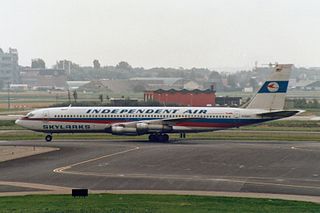
On 8 February 1989, Independent Air Flight 1851, a Boeing 707 on an American charter flight from Bergamo, Italy, to Punta Cana, Dominican Republic, struck Pico Alto while on approach to Santa Maria Airport in the Azores for a scheduled stopover. The aircraft was destroyed, with the loss of all 144 people on board, resulting in the deadliest plane crash in Portugal's history. All of the passengers on board were Italian and all of the crew were Americans. The crash is also known as "The disaster of the Azores".

West Coast Airlines Flight 956 was a scheduled commercial flight in the western United States which crashed on October 1, 1966, approximately 5.5 miles (9 km) south of Wemme, Oregon, southeast of Portland. Thirteen passengers and five crew members were aboard, but none survived. In its first week of service, the aircraft was destroyed by the impact and subsequent fire.
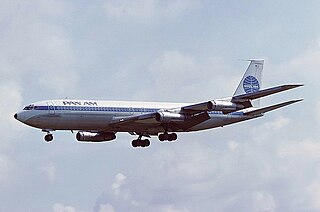
Pan Am Flight 806 was an international scheduled flight from Auckland, New Zealand, to Los Angeles, California, with intermediate stops at Pago Pago, American Samoa and Honolulu, Hawaii. On January 30, 1974, the Boeing 707 Clipper Radiant crashed on approach to Pago Pago International Airport, killing 87 passengers and ten crew members.

TAN-SAHSA Flight 414 was a scheduled flight from Juan Santamaría International Airport, San José, Costa Rica to Toncontín Airport in Tegucigalpa, Honduras, with a stopover at Augusto C. Sandino Airport in Managua, Nicaragua on 21 October 1989. Flown with a Boeing 727-200, the flight crashed into a mountain at 7:30 A.M. local time after the pilots failed to follow a special landing procedure required for the arrival to the airport. The crash killed 131 passengers, leaving 15 survivors. While 20 passengers initially survived, five died before treatment, due to a delay in rescue personnel because of bad weather. It remains, as of 2022, the worst aviation accident on Honduran soil and in Central America at large; it is also the 15th deadliest involving a Boeing 727.
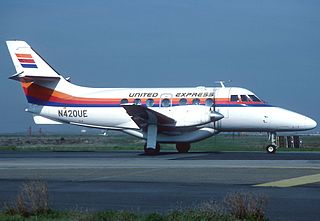
United Express Flight 2415 was a regularly scheduled flight in the northwest United States from Seattle to Pasco, Washington, operated using a BAe Jetstream 31. Late on Tuesday, December 26, 1989, Flight 2415 crashed while attempting to land at Pasco's Tri-Cities Airport, killing both pilots and all four passengers aboard.

Aeroflot Flight 99 was a Tupolev Tu-124 operating a scheduled domestic passenger flight from Leningrad to Murmansk, both in the Soviet Union, which crashed while attempting to land on 11 November 1965. Of the 64 passengers and crew on board, 32 were killed in the accident, and many of the survivors sustained injuries.

Air Manila Flight 702 was an unscheduled passenger flight from Naval Air Station Agana in Guam to Ninoy Aquino International Airport in Manila, carrying 33 passengers and 12 crew members; most of whom were personnel from the base. The Lockheed L-188A Electra attempted takeoff from runway 6L but crashed near a residential area; the crash was caused by retracting the flaps at an altitude too low to clear the terrain after the propeller of engine number three feathered. All 45 people on board and one person on the ground perished in the crash. The investigation concluded that the pilot should have followed company policy by aborting takeoff in the event of an engine failure before reaching VR (takeoff) speed.















